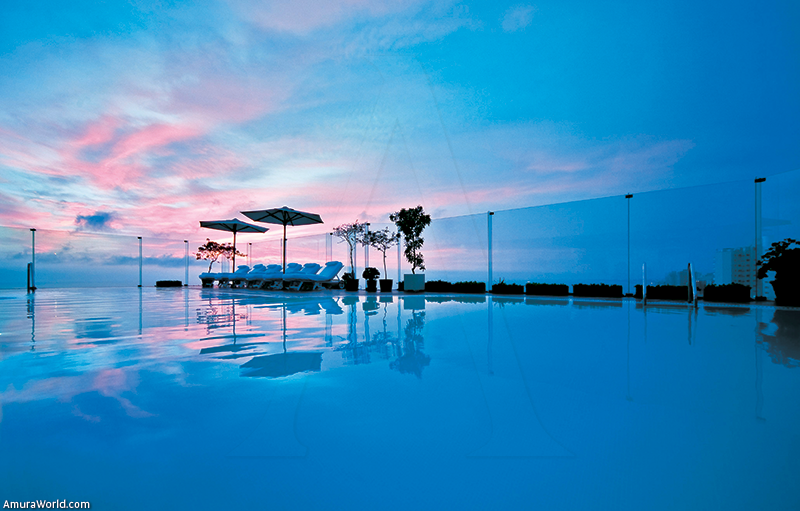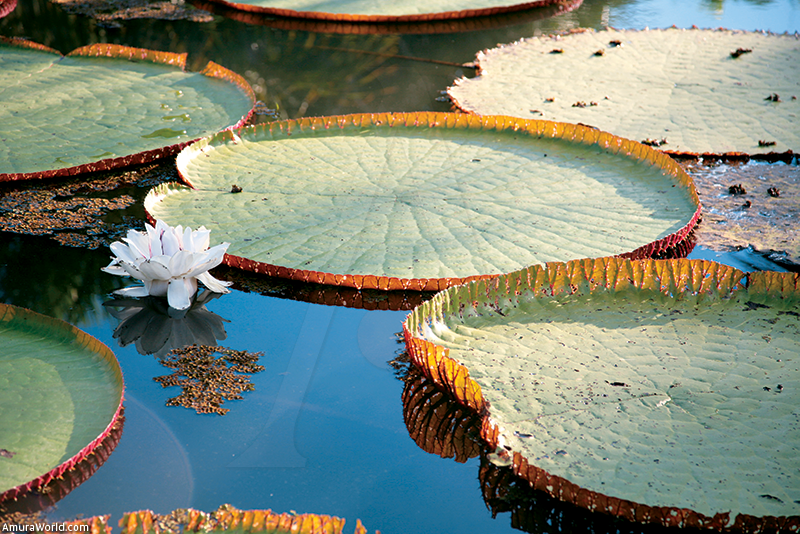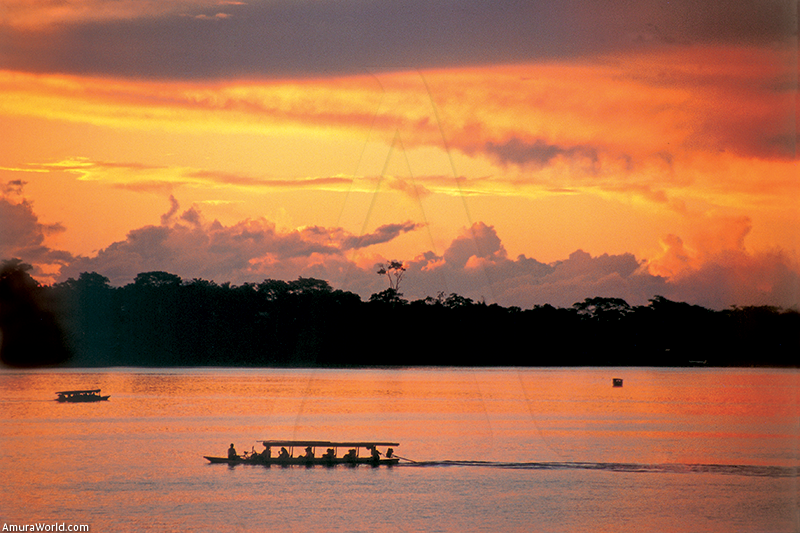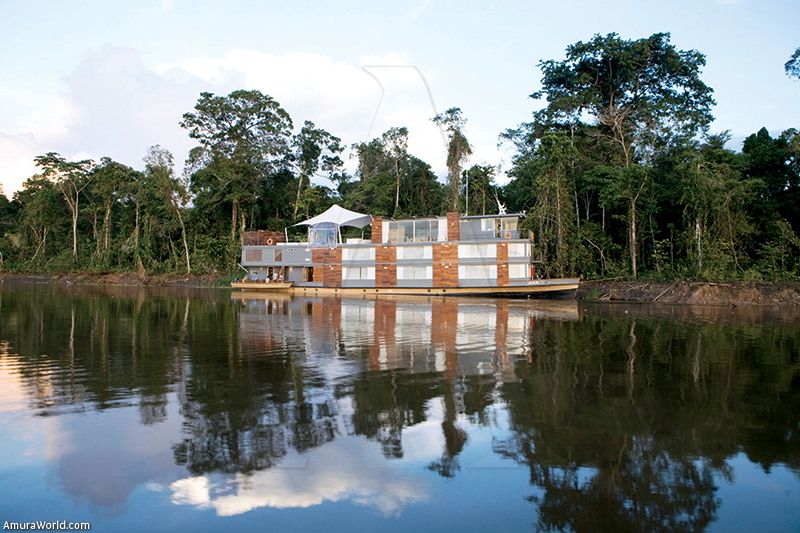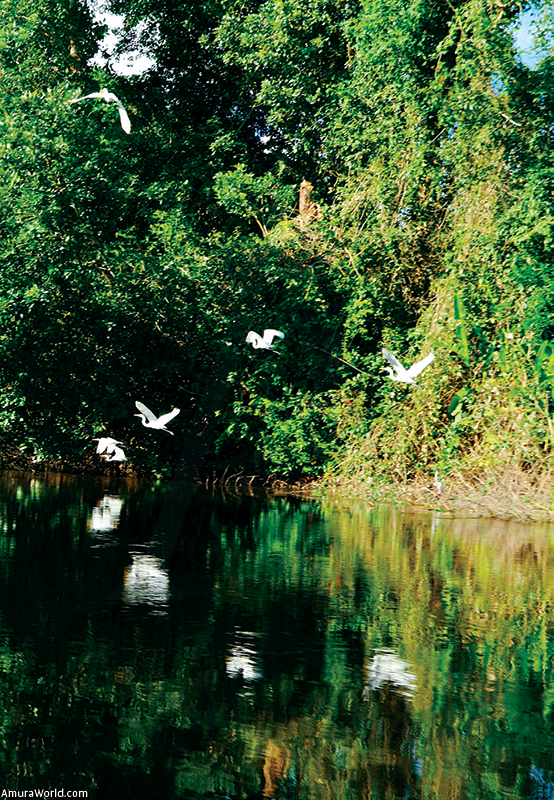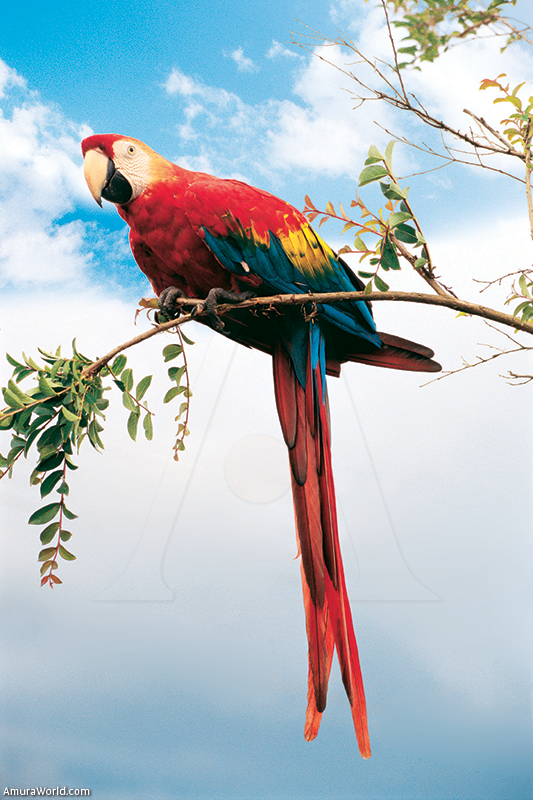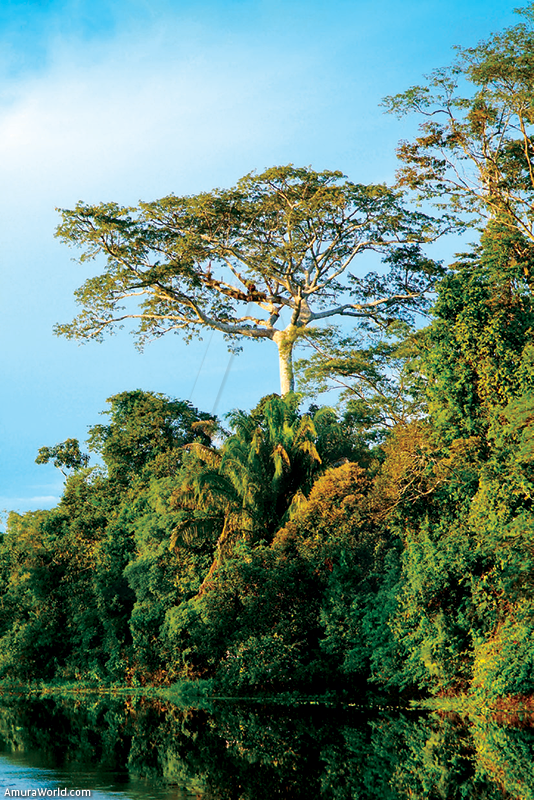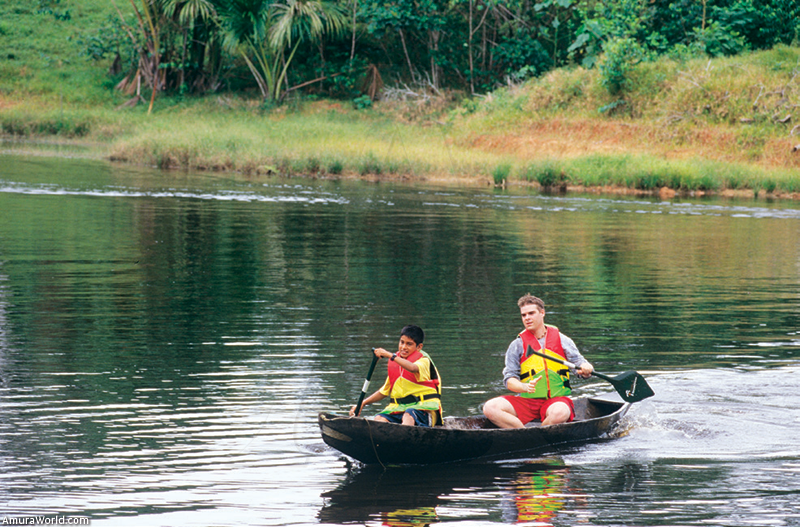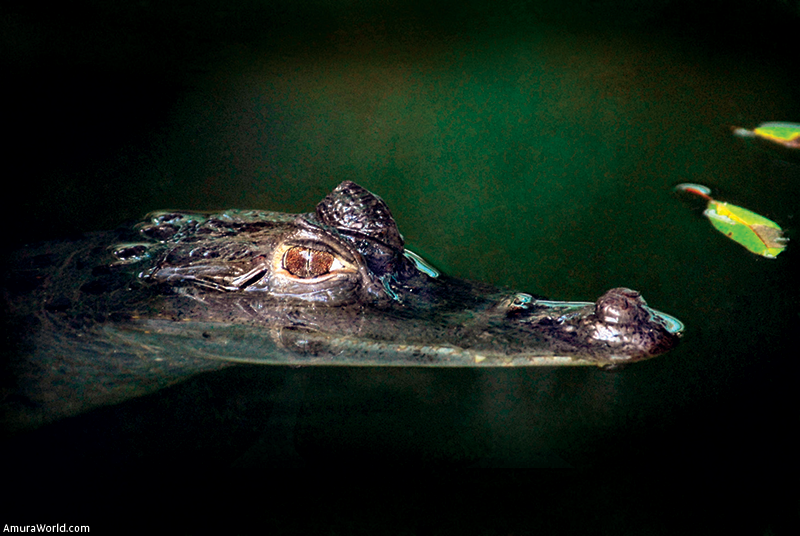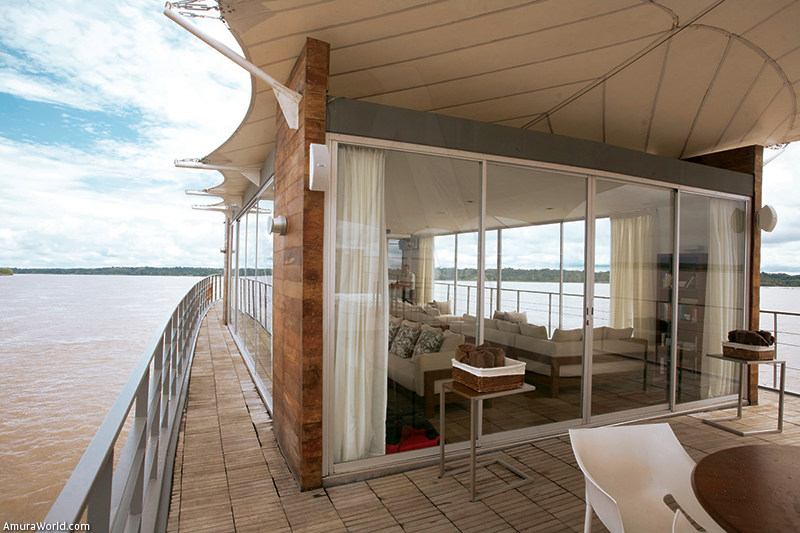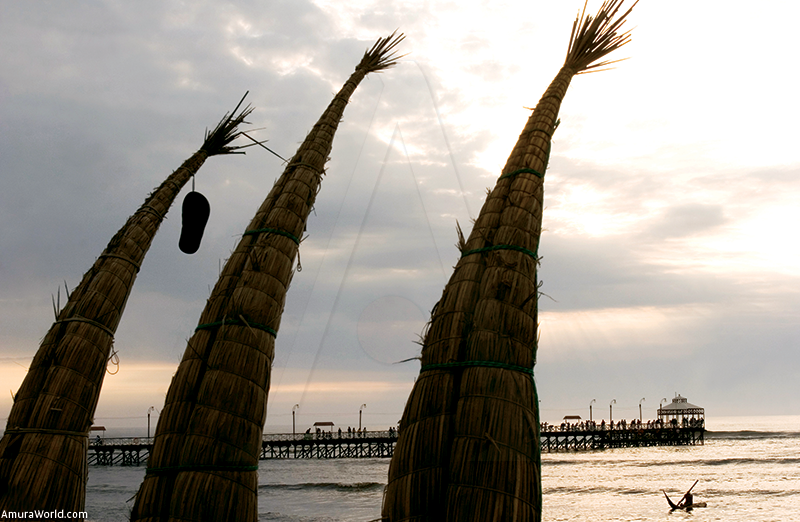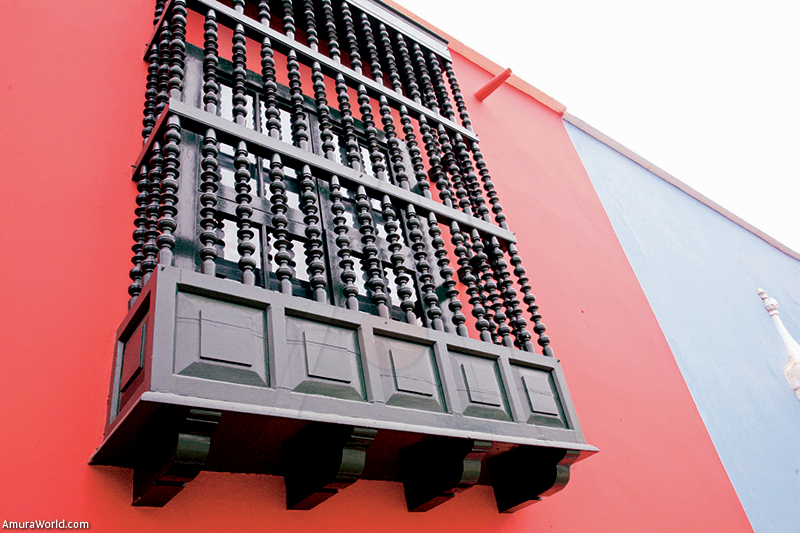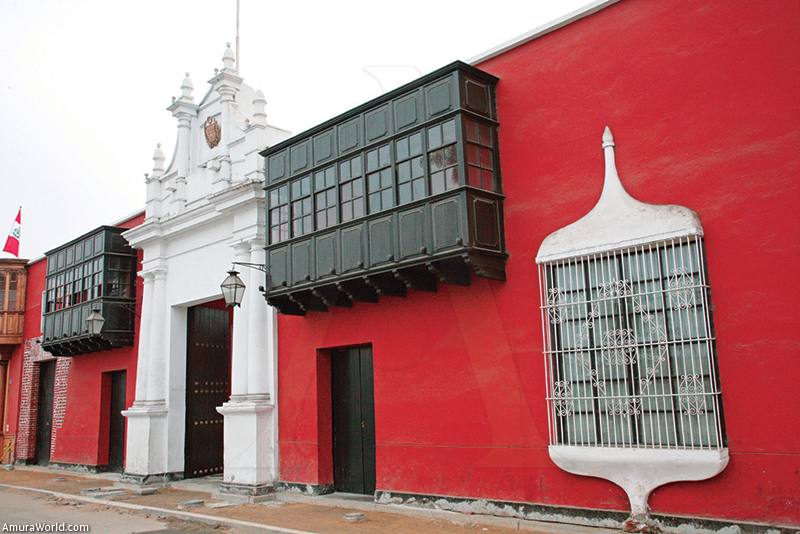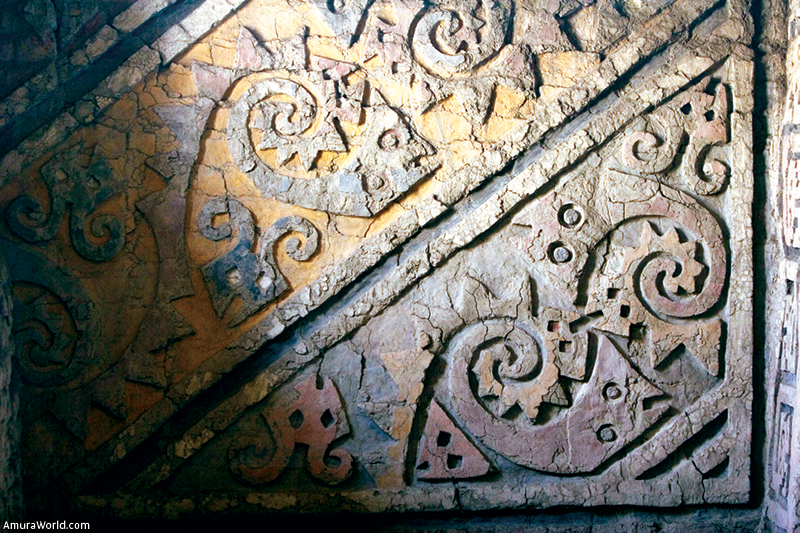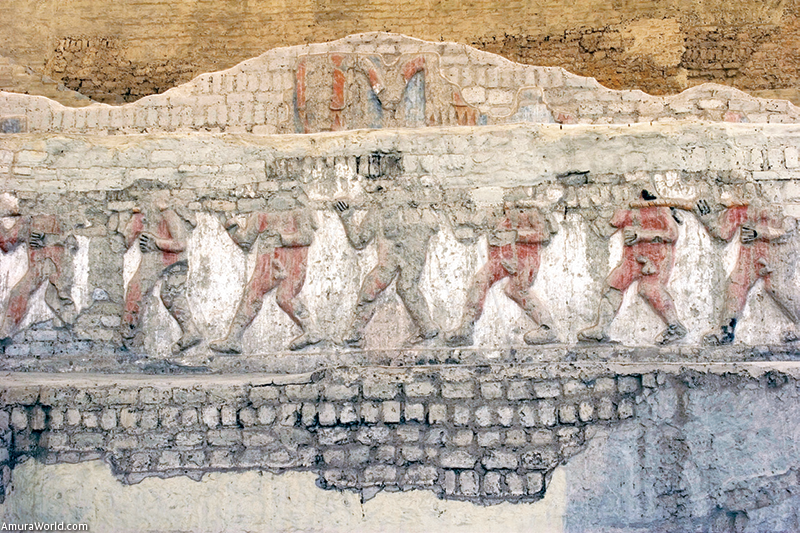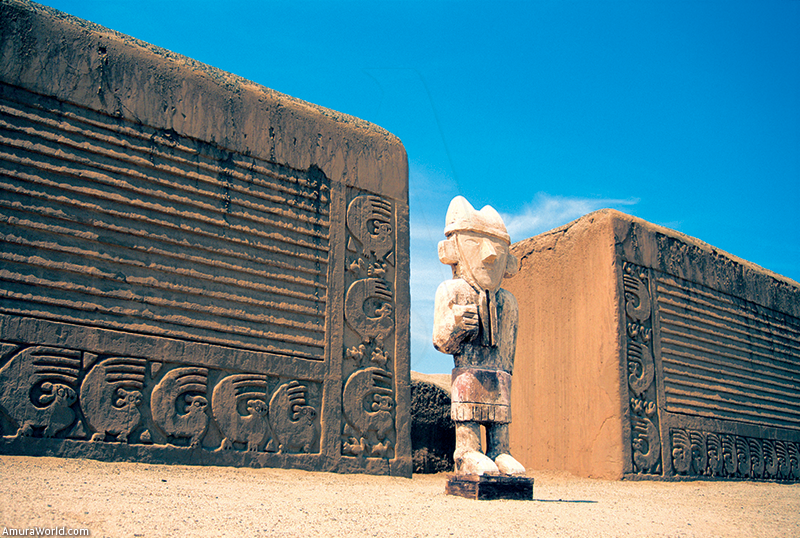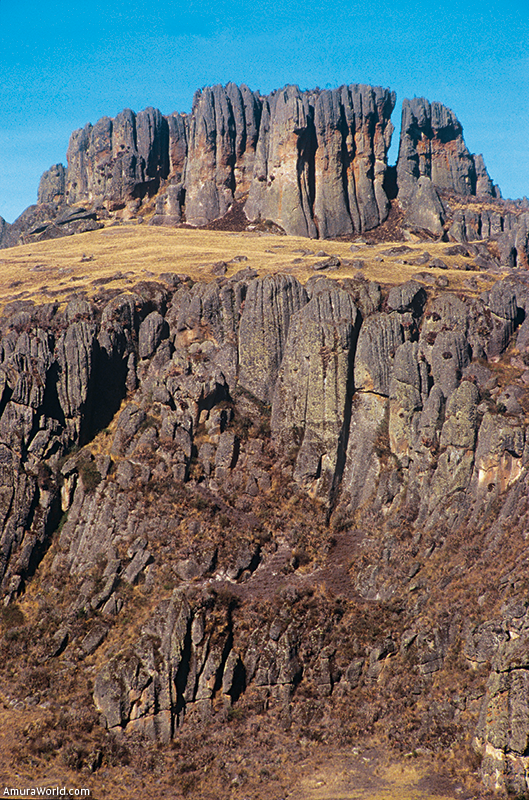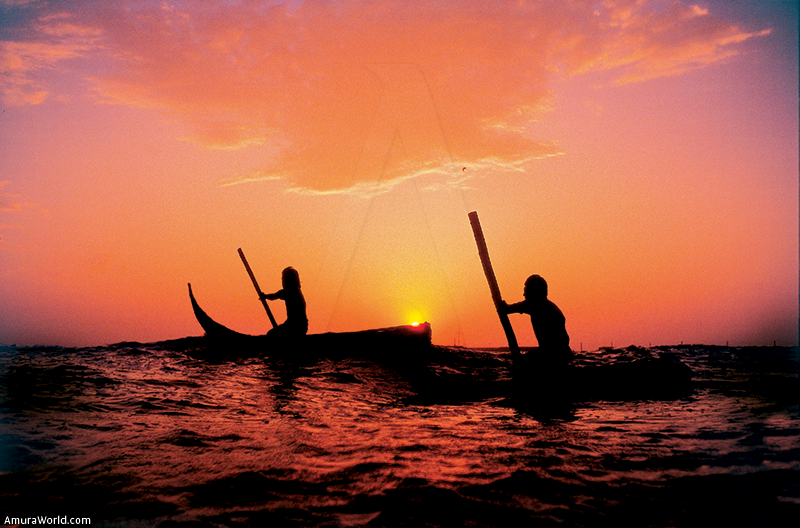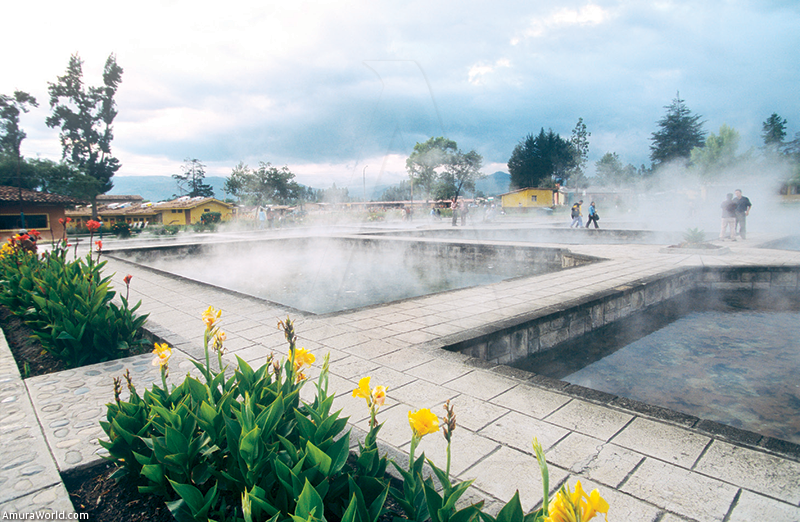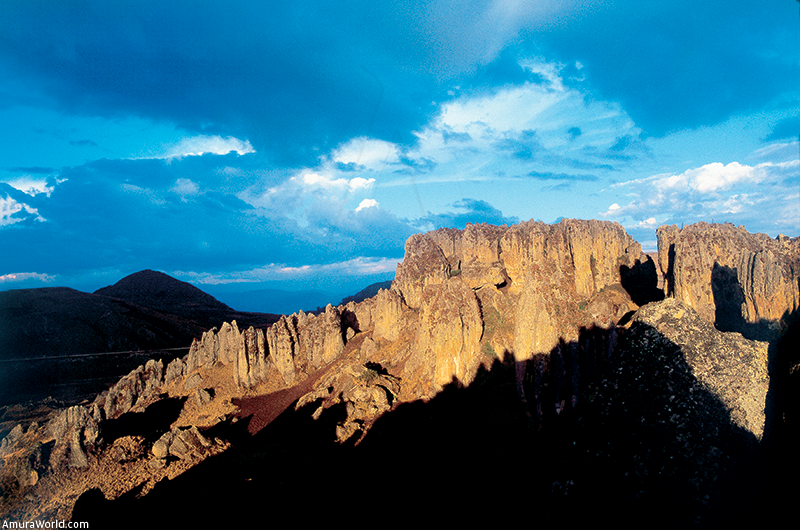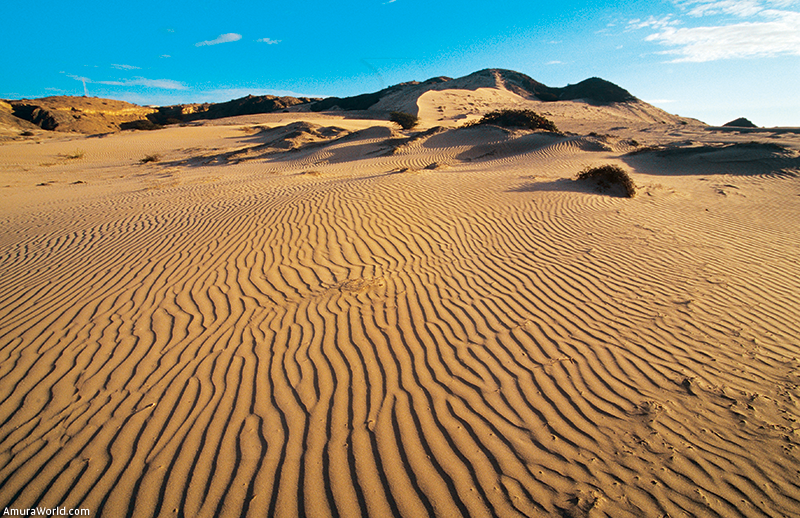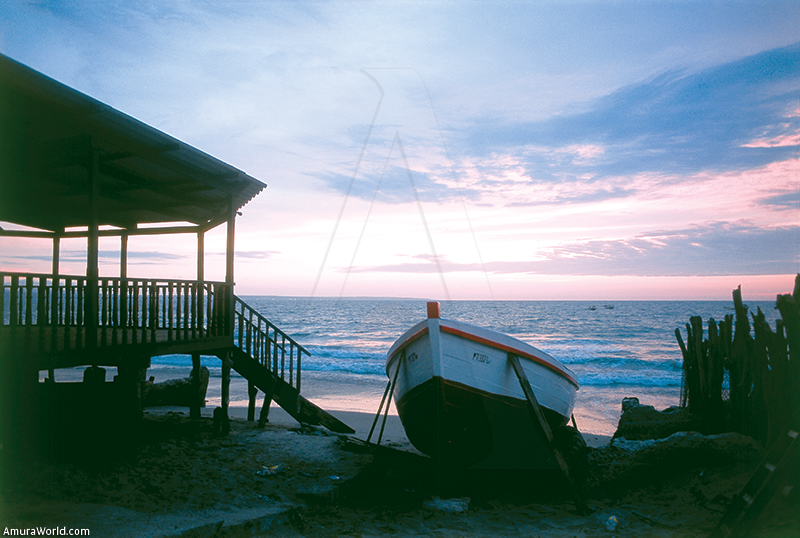Amazonic adventure and the moche country
Discovering Cuzco and Machu Picchu is the classic Peruvian adventure, one that takes travelers across lake Titicaca, and through the figures in Nazca. I want to investigate another facet of a country rich in history, vestiges, and ecosystems; to know a world that is seldom spoken of, that surprised, fascinated and conquered me; one where the fabulous adobe-built pyramids rise inside the Amazon, and where the impressive northern coast is found.
Iquitos
As the plane finally pierced the thicks clouds that hover over the Amazon region, I discovered the city of Iquitos, surrounded by three rivers: The Nanay, Itaya and Amazon, and the humid tropical heat. Its streets swelter by the heat in the air; the hoards of taxi vehicles run the streets filling it with an infernal noise; the people walk unfazed through the jetties and through the Bellavista Nanay embankments where fishermen bring fresh catch, and where one can taste the famous Suri, the enormous larvae of the Amazon coleopteron called Picudo Negro and served in skewers.
From this point, we embarked a small vessel to visit the pleasant town of Barrio Florido, and the exotic gardens populated by caimans, the lagoon where the immense Victoria Regia leafs float, those enormous patches of white flowers, and where the Paiches (Arapaima Gigas), the second largest freshwater fish, measuring up to 10 feet in length and weighing up to 500 lbs, swim. We visited the Manatee Rescue Center, where these mammals are doused in freshwater. They are precious animals, once considered to be the legendary sirens of the Amazon.
Situated three thousand kilometers from the coast, the city conserves an air of days gone by, reminiscent of the days when the rubber trade what at its peak, at the end of the 19th century; a time when people became extremely wealthy, and would build beautiful mansions in Iquitos. One is Carlos Fitzcarrald, Peruian merchant, who inspired the film Fitzcarraldo, by Werner Herzog, where the main character, a rubber magnate, parks his ships on top of a hill in the middle of the jungle, with the purpose of raising money and build and opera in the jungle. The Fitzcarraldo house adorns the Tarapacá jetty, and it is an excellent restaurant, the ex –hotel Palace displays its tiles and balconies of yore, when the Choen house was a store, and the Fierro house reached Iquitos. This house, designed by the Frenchman G. Eiffel, was cosntructed in Belgium, exhibited in the international Paris exposition in 1899, bough by the rubber worker Baca Diez, partner of Fitzcarrald and, facing the impossibility of taking it further up the Ucayali river, sold it to Anselmo Aguilar, who rebuilt it in the Arms plaza of Iquitos. The history of this glorious epoch would make me dream as I discovered the ancient mansions, the neighborhood of Belén, with its houses constructed on top of piles, the market with its medicinal products from the jungle, or dining in the floating restaurant “Al Frío y al Fuego.”
Finally, I boarded the elegant 12-suite “Aqua” ship to navigate through the jungle, enjoying a wonderful cabin, the excellent food from chef Pedro Miguel Schiaffino, as well as the fantastic guides and staff of the ship.
Navigating through the Amazon
On the first day, we explored the Huaysi canal and the black Tahuayo river by boat, until we arrived at the Charo lake, observing the life of the fishermen and the birds; blackbirds, hawks, tropical canorous, monkeys and sloths. This is where the Aqua begins its journey, and where I fished my first piranha. I felt like Fitzcarraldo as I stood on the upper deck, observing how the jungle would glide across my sight. We reached the Yacapana islands, a place dominated by iguanas, and observed grey and pink dolphins. Locals believe that touching an iguana would cause one to turn into one, thus they remain undisturbed. They also believe that the dolphins are able to morph into humans, snatching men and women from the nearby towns. As the sunlight pierced through the skyline and created a magnificent rainbow, I visualized the legends I had heard, dining on pisco sour, and navigating upstream towards the birthplace of the Amazon river, where the Marañon and Ucayali rivers fuse together in order to form it.
On the second day, we visited the protected area of the rainforest, where turtle nests abound, and we observed the beautiful trees, the insects, the birds, the monkeys and various other spices. On the third day, after undertaking a daily excursion on boat through the Yurucuche river I could observe different types of plant and animal species, given that the Aqua traced the edges of the Pacara Samiria national reserve, piercing through the jungle and allowing for all sorts sounds, aromas and panoramas to merge, creating an unparalleled natural experience. We reached the birthplace of the Amazon River, where the two aforementioned rivers form an impressive waterfall. Finally, we visited the Puerto Prado to gain knowledge from the local people, and to buy a few of the necklaces adorned with seeds, feathers and fish scales. After an excellent meal, we visited the merchant town of Nauta, which is found at the very end of the only highway in the region which leads to Iquitos.
On the fourth day, we awoke while travelling through the Majestic Ucayali River, the longest branch of the Amazon River, and on the boat we observed sloths, hoatzines and golden orioles. As we walked through the jungle, we reached the town of Magdalena, where ten families reside with their respective parrots and monkeys serving as pets. Nevertheless, we made our way to the Yanallpa Lake to observe the Victoria Regia in its natural state, near the five-leaved silk-cotton tree and the heveas. Once back at the river, we observed the small trading vessels, the fishermen, and a few locals travelling to the various ports to sell their products. We enjoyed a spectacular sunset charged with threatening clouds that played with the sun rays.
On the the fifth day, we awoke to clouded sky that enveloped the canopy, and we visited a small village where it was school day, where we saw fish-based food preparations. Our tour guide showed us medicinal trees, while titi white-faced monkeys looked at us and the birds filled the air with their song. Navigating upstream, we arrived at the end of the Pacaya River, where we again saw gray and unusual pink dolphins.
As we registered out entrance with the local forest ranger, we made our way through the river by boat until we arrived at Yanatacu Lake. Here we observed sloths, frail, capuchin and howling monkeys and storks. Nevertheless, the only attractive sight was not the beauty of the Amazon, but the delicious dinner we enjoyed that night.
On the sixth day, we navigated again through the Pacaya, observing the flora and fauna, until we stopped to fish piranhas who, incidentally, bite the hook at violent speeds. After lunch, we left the sighting of dolphins behind us, and began our journey through downstream, towards Iquitos, which we reached the following morning. In the afternoon we visited a small river under the rain, and enjoyed an excellent farewell dinner, thoroughly surprised that the crew was setting up a small festivity for us as we dined.
We awoke at Iquitos, where our vessel travelled through the Momón River to interact with the members of the Boras tribe, who delighted us with their traditional dance routines and arts and crafts. After lunch, we sadly parted ways we the Aqua, yet graceful that it has provided us with many memorable moments. We took a plane to Lanque, which then took us to Lima. We left the jungle, full of legend and fauna, where the memory of the Fitzcarraldo band will forever linger.
Lima
The capital finds itself usually under the cover of clouds due to the Humboldt current that travels through the Pacific, down to the South Pole, bringing with it a flow of cold water. Its beaches are ample, with waves suitable for surfing, and are bordered by a cliff where the charming Miraflores neighbourhood is found. Here one can observe elegant and picturesque houses and shops, the Larco Mar shopping mall, the Miraflores Park Hotel Orient- Express, and its excellent Mesa 18 restaurant.
We visited the San Isidro neighbourhood and the downtown area, where colonial houses still stand. The area is also home to an imposing cathedral, beautiful churches and the convents of Santo Domingo and San Francisco and the Armas plaza. It is a pleasure to discover downtown Lima and travel through its colonial streets. We also had time to visit the Huaca Pucllana, an adobe pyramid erected by the people of Lima between the years 200 and 700 d.C.
From there we made our way to the yacht that would take us to the northern coast, leaving from the Callao port to discover a deserted beach covered by a cloud of mist. The long beaches where a permanent sight until our arrival to Trujillo, overlooking the beauty of the Sierra Blanca that we could not visit given our tight schedule.
Trujillo
We disembarked the next day at the Huanchaco marina, where we discovered the famous totora embankments (long Peruvian grass); these single-seater’s are identical to the ones used by ancient habitants, and they currently serve as fishing vessels. We visited the Chan Chan ruins that was an important adobe city constructed by the Chimú in the 9th century, and where fortified spaces stand out. There we admired the decorations traced on adobe, and the extension of this ancient, perfectly planned, pre-Hispanic city. We arrived that the Huaca de la Luna and the Huaca del Sol (which has not been explored yet), imposing adobe pyramids of the ancient city of Moche or Mochica, a culture that flourished between 300 a.C and 700 d.C, before the Incas, that has left fantastic vestiges. Here we could admire the pyramid walls full of gorgeous frescos that represent deities, humans and animals with geometric decorations that still retain their colors. The unsuspecting beauty of the vases that represent human and animal faces in a realistic manner was a fascinating discovery.
The city of Trujillo was another great discovery, with its elegant, colorful buildings which delineate the beautiful Arms plaza. We walked through the streets to admire the colonial houses with their high windows set with bars, and its fabulous patios; its churches furnished with golden wood altars that represent angels and saints. It is an elegant city where one can breathe peaceful air, and live with excellent cuisine. The Cassinelli museum exhibits an imposing collection of Moche vases characterized by the perfection of its faces.
Pacasmayo
Navigating always northwards, we stopped at Malabrigo Port to visit the Huacas el Brujo, on the coast, right to the side of the fertile valley. In Pacasmayo we could observe the frescos covered in color at the Huaca Cao Viejo, and the tattooed mommy of the governor, who still wears the jewelry from his last journey. Following our course along the beaches, we reached Pacasmayo, on the edge of the desert, we reached one of the premier surfing spots in the country, where we finally disembarked on the long dock.
Cajamarca
After crossing arid deserts under the cover of clouds, we finally saw sunlight as we made our way into the Andes. The ample valleys explode with beauty of its rivers and patches of rich vegetation, its mountains dotted with cactus’ that defy the blue sky. From there we were able to reach the extensive valley of Cajamarca, where we discovered an imposing colonial city which is home to Baroque-era churches: The convent of Belén, the cathedral, the church of Saint Francis, and the beautiful Armas plaza, which features a fountain built in the 16th century. The colonial era houses are fitted with doors made out of stone and high-rise windows. Some alleyways trickle their way down hillsides, and the city palpitates with an air of serenity. Atahualpa, the last Inca leader, was arrested by Pizarro at a place called the “Baño del Inca”, where thermal waters surge. At the hotel “Laguna Seca” we were able to enjoy these, which create large clouds of vapor during the cool morning hours. Nearby there exists a room that, legend has it, was built by the Inca people and stacked with to keep Atahualpa from being executed.
Chiclayo
Back in Pacasmayo, we sailed once again northwards until we reached the port of Pimentel where we enjoyed the rice with duck and tortillas topped with sting ray meat. Chiclayo is a hectic city that also features a prominent cathedral and the majestic Gran Hotel Chiclayo. But its main attraction is found in the beautiful archeological Moche sites where tombs where found filled with gold ornaments. We visited Sipán, where one can admire huacas in the middle of a fertile valley. The town of Túcume is home to a large number of tall pyramids: Pampa Grande, Batán Grande and Ferreñafe.
The most distinctive attraction here, though, is the Señor de Sipán museum, which displays the findings of this important Moche leader, in whose tomb are found elaborate jewelry made out of gold and copper, necklaces made of precious stones and shells, and gold and turquoise earrings. It is a fascinating museum found in the city of Lambayeque, as it the Bruning Museum. One can visit the ruins of the colonial city of Zaña, which was destroyed by earthquakes and floods.
Piura
Following our designated course through the edges of the arid desert, we passed along beaches, circumscribe the cape of Bayovar to sail inside the immense bay to reach the rocky and arid coast and arrive at the gorgeous fishing town of Paita, founded in 1532 by Pizarro, and where one can visit the house of Simon de Bolivar’s lover, Manuela Sáenz, a famous activist of the freedom movement, who sought refuge after exiling herself. The bay is adorned by adorned by a large number of boats, and the port shimmers under the sun, while the people walk the streets under the cover of trees.
Further in we reached the Colán beach, where raised houses dot the landscape in order to avoid the waves that crash into the palm trees. This is the home of the church of San Lucas of Colán, built in the 16th century, when the Spaniards arrives. We passed Bocana beach, covered by thousands of red crabs. This is the mouth of the Chira River that irrigates the fertile plains of Sullana to make its way to the more mountainous and more arid coast.
Our journey took us to Talara, an important commercial port, and from there to Cabo Blanco, a charming shipyard that harbors the home that Hemingway resided in during the filming of “The Old Man and the Sea”. Here we discovered the Órganos and Mánorca beaches, the most fashionable spot in the Peruvian Costa del Sol. The town of Máncor vibrates with a hedonistic lifestyles, swanky hotels and restaurants, shops, bars and luxurious beachfront houses. We were able to the excellent cuisine at the DCO hotel, which sports an embracing minimalist décor. Finally, we gazed at the elegant houses and hotels of Punta Sal, where we parted ways with our yacht to cross through the sun-baked desert that would lead us to Piura.
Piura is an enchanting city, guarded by its cathedral, and home to the elegant “Los Portales” hotel, ideal for one to enjoy the typical cuisine of the region.
From here we boarded Lan’s plane which took us back to Lima. Our journey through fantastic, and surprisingly interesting Peruvian regions had come to an end. The Amazon jungle had conquered me with its mysterious world inhabited by caimans, sloths, monkeys and birds; inside that humid heat that bathes the rivers that run towards the sea, forming the great Amazon River.
The northern coast, arid and deserted, had enchanted me with its beautiful colonial cities of Trujillo and Cajamarca, its coast where the surf reigns, its majestic beaches, Pacasmayo and Máncora and, above all, by its Moche huacas, those immense adobe pyramids with remains of frescos and impressive tombs. I had discovered another Peru, that which forgets Machu Picchu and Cuzco, that with fascinates and surprises, that intrigues and provokes dreams of the past while the totora vessels take the lonely fishermen to face the waves at the edge of a deserted coast.
Text: Patrick Monney / Arely Vázquez ± Photo: PromPerú, Aqua Expeditions, Patrick Monney.

